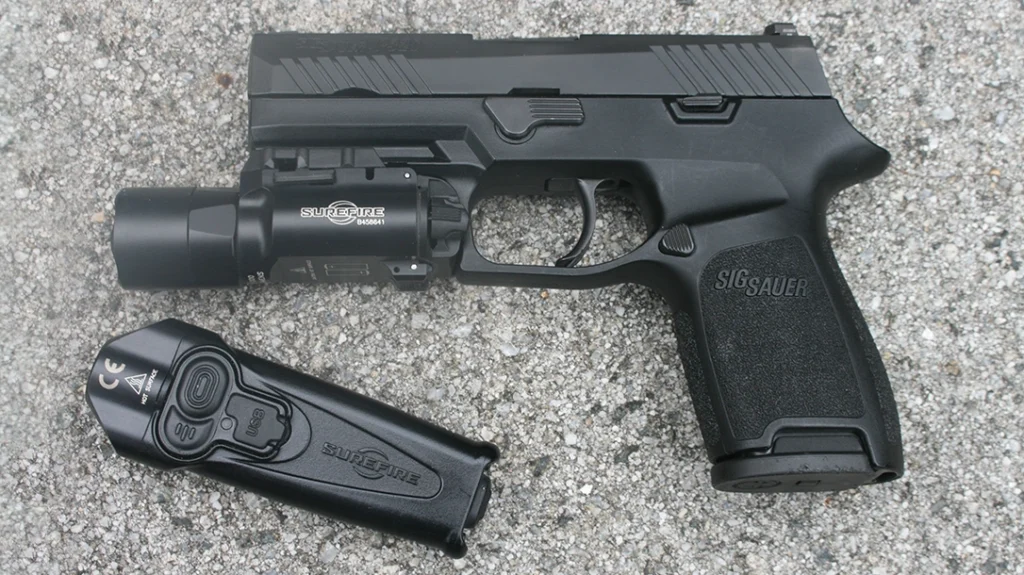Perhaps the fastest-evolving category in personal defense accessories is light technology. The light tools readily available today, both hand-held and weapon-mounted, represent a quantum leap in performance over those just a few short years ago. If you were to equate advancements in light technology to a biplane versus an F-35 fighter, you wouldn’t be far off. For this reason, it has become a hot market. But what about running a weapon-mounted light on a carry pistol? Here are some thoughts.
Running a Weapon-Mounted Light on Your Pistol
In the late 1990s, LEDs (light-emitting diodes) began replacing incandescent bulbs in tactical lights. LEDs offer a number of advantages, including long life, shock resistance, longer battery life, and far greater light output. Battery technology has also improved by leaps and bounds, including rechargeable lithium-ion batteries.
Some lights can be categorized as dual fuel, powered by either a rechargeable battery or an off-the-shelf 3-volt lithium battery. This can be especially handy when you’re off the beaten path and unable to plug into a recharging unit.
Advertisement — Continue Reading Below
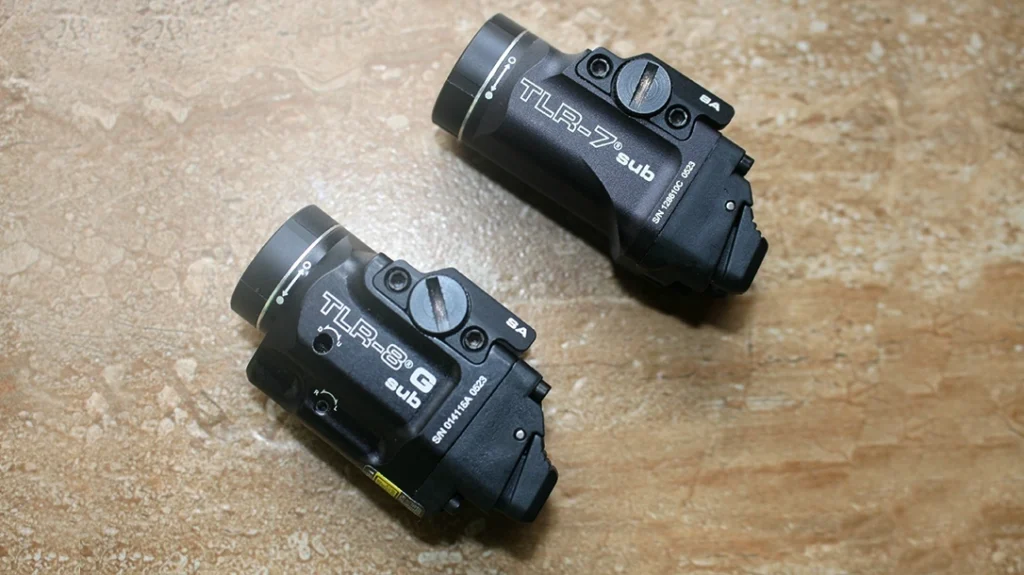
Weapon-mounted lights were once viewed as exotic, and use was pretty much restricted to SWAT cops. However, they have now come into the mainstream. A little more than a quarter century ago, Insight Technology of Londonderry, NH, solved the battery riddle and designed a weapon-mounted light that could be affixed to the pistol without any inconvenience to the user.
The Insight Technology M-3 arrayed the batteries side by side rather than inline. This made a weapon-mounted light adaptable to standard-size holsters. Around the same time, the major manufacturers began producing pistols with an integral rail for affixing a light or laser aimer. Holster makers quickly followed up with light-bearing holsters.
Advertisement — Continue Reading Below
Today, this concept is used throughout the industry as lights have gotten smaller, brighter, and more practical, even for concealed carry. Let’s take a look and see what a weapon-mounted light might bring to the table.
The Light Advantage
Contrary to popular opinion, weapon-mounted lights aren’t a new innovation and have been around for over 100 years. In 1912, San Francisco inventor George Seely was granted a patent for an innovation called “Night Sight for Firearms.”
Seely’s light was mounted on a Colt revolver and featured a spring with a rubber cushion to prevent damage to the bulb. While this was a bold step forward, it took another 80 years or so for the concept to catch on. Modern WMLs have evolved to the point where, when combined with a downsized pistol and a good holster, the result is a discreet package suitable for everyday carry.
Advertisement — Continue Reading Below
So why bother with a weapon-mounted light? A very large percentage of incidents that require an armed response unfold under less-than-optimum light conditions. So, having immediate access to an artificial light source could be a lifesaver. A hand-held flashlight may do the trick, but in reality, it’s a less-than-perfect solution.
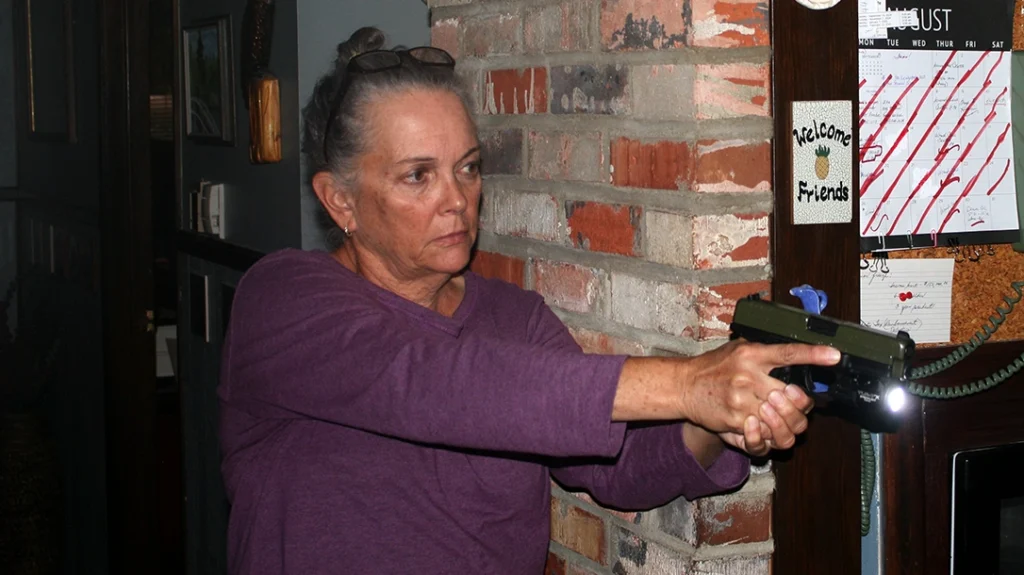
Coordinating a handheld light with a pistol is not especially difficult on the sterile range. However, real life often has a nasty way of kicking us in the teeth. Life-threatening stress plays havoc with fine motor control. Pulling off some of those intricate flashlight-assisted shooting techniques can be tough, especially when you and your adversary are moving.
Advertisement — Continue Reading Below
Action tends to unfold very quickly, and distance is short, which leaves little room for error. No matter which flashlight-assisted shooting technique you use, the grip on your pistol is compromised. As a result, hit potential suffers, particularly when firing at speed.
Running a Pistol with a WML
By affixing a light to the gun, basic operational skills are much simpler. Drawing the gun and getting into action is much faster with a WML than with a handheld unit. In the event you have to reload or clear a stoppage, this, too, is far easier since you no longer have to juggle the flashlight,
The primary advantage of a light source, whether hand-held or weapon-mounted, is that it gives you the ability to discriminate between potentially lethal threats and non-threatening behavior. Not to mention identifying friendlies. It can also be used as a subtle measure of force to keep the “maybe” people in check.
Advertisement — Continue Reading Below
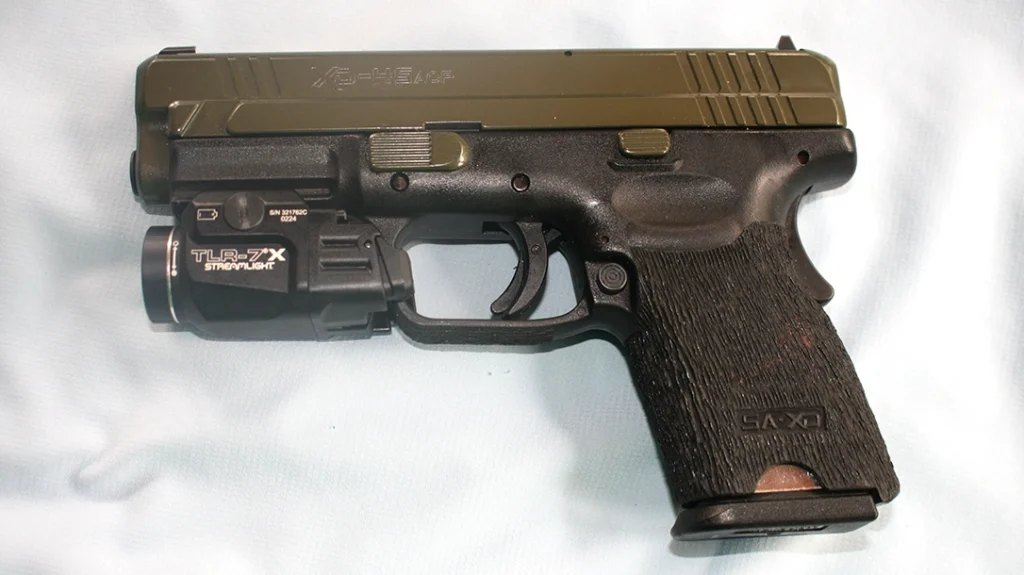
It has been my experience that by illuminating sketchy people with a good dose of white light accompanied by some verbal direction, they were far less likely to do something stupid that would require a serious force response. Introducing several hundred lumens of light to the night-adapted vision of an aggressor won’t cause him to burst into flames. However, it will buy you a few seconds to counter his attack.
Gunplay, involving both the police and armed citizens, tends to unfold at a very close distance. At least half the time, your adversary may be close enough to touch. With that said, physical contact is highly likely. Should the muzzle of your pistol contact the assailant’s body, there is a possibility it could be pushed out of battery, preventing the gun from firing.
Advertisement — Continue Reading Below
A few years ago, I discovered, quite by accident, that if the bezel of your WML extends beyond the muzzle of your pistol, it cannot be pushed out of battery with a contact shot. That, of course, is another bonus.
WML Considerations
Adding a weapon-mounted light to your pistol does indeed boost your capabilities. But there is more to it than merely sliding a light onto the rails and going on your merry way. Going down the wrong path will get you in more trouble than you ever dreamed of.
First and foremost, WMLs are threat management tools and do not replace handheld flashlights. The good news about having a WML on your pistol is that it automatically lines up the light beam with the gun’s muzzle.
Advertisement — Continue Reading Below
The bad news is that you have a gun attached to your flashlight, which can create all sorts of problems. If you utilize that WML for routine searching and probing, you will inevitably violate General Safety Rule #2, which states, “Never let your muzzle cover anything you are not willing to destroy.”
I’m personally familiar with incidents where people have been killed and injured because that rule was violated.
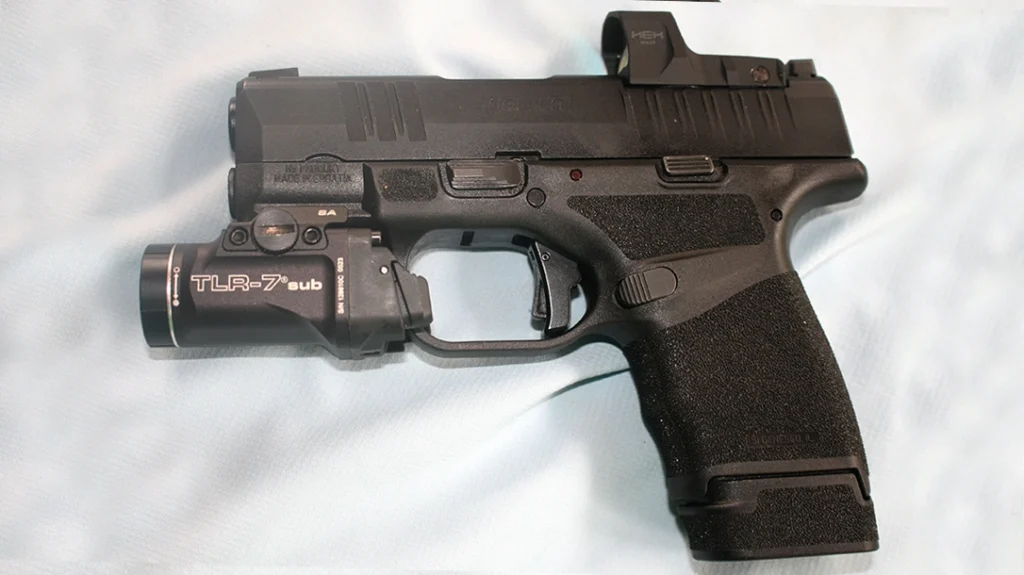
Advertisement — Continue Reading Below
The second big hurdle to cross is light activation. Most of the popular WMLs feature either a rocker switch or a button to activate the light. Avoid using the index finger of the shooting hand to activate the light. That finger has one job and that is to press the trigger to fire the gun. Instead, use the support hand thumb to activate the light.
Again, I’m familiar with an incident where an individual in a stressful threat management situation used the trigger finger to activate the light and instead hit the trigger, resulting in a negligent discharge.
Holstering a Weapon-Mounted Light Equipped Pistol
Clearly, you will need a light-bearing holster to accommodate your pistol with the mounted light. The good news is that they are relatively easy to find these days. I have had very good luck with examples from Muddy River Tactical. The company offers both IWB and OWB holsters for most popular lights and pistols.
By all means, get a holster dedicated to your light and pistol. An “almost fits” holster is not only inefficient but is very likely to be dangerous.
There is no getting around the fact that making the holster even just a little bit bigger, makes the entire package harder to hide. Although an IWB rig will mitigate that to a certain degree.
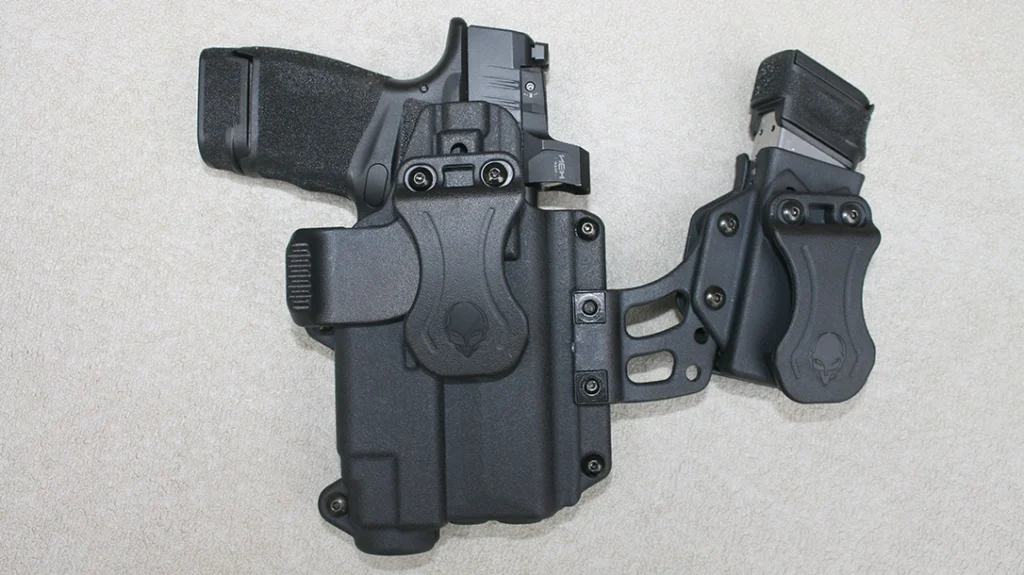
Over the years, my strong side hip has grown very tender, making wearing a traditional IWB holster very uncomfortable. Because of this, I tend to favor an OWB holster. In my part of the world, a covering garment can be worn three seasons of the year. So, I can discreetly carry a compact-size pistol with a WML and stay under the radar.
Hot, sticky weather complicates the process, and I have to go with a sleeker package sans light. The bottom line is that we all live and work in different social settings and wear different types of clothing. What may work in Minneapolis may not work in Miami.
Force Multiplier
There is absolutely no doubt in my mind that in a low-light environment, hit potential with a pistol equipped with a weapon-mounted light is greater than when using a hand-held flashlight. That disparity may not be so great when the target is just a few yards away. However, the odds shift dramatically in favor of the WML when distance, movement, and stress become part of the picture.
The manufacturers of lights have risen to the occasion. Firms such as Nightstick, Streamlight, Viridian, and Surefire now offer WMLs optimized for compact and subcompact pistols. In fact, you can take it one step further and select an illuminator that also features a laser aiming device, further tipping the odds in your favor.
My GLOCK 19 has been sporting a Streamlight TLR-8 AG with a green laser for several years now. I don’t plan on going back.
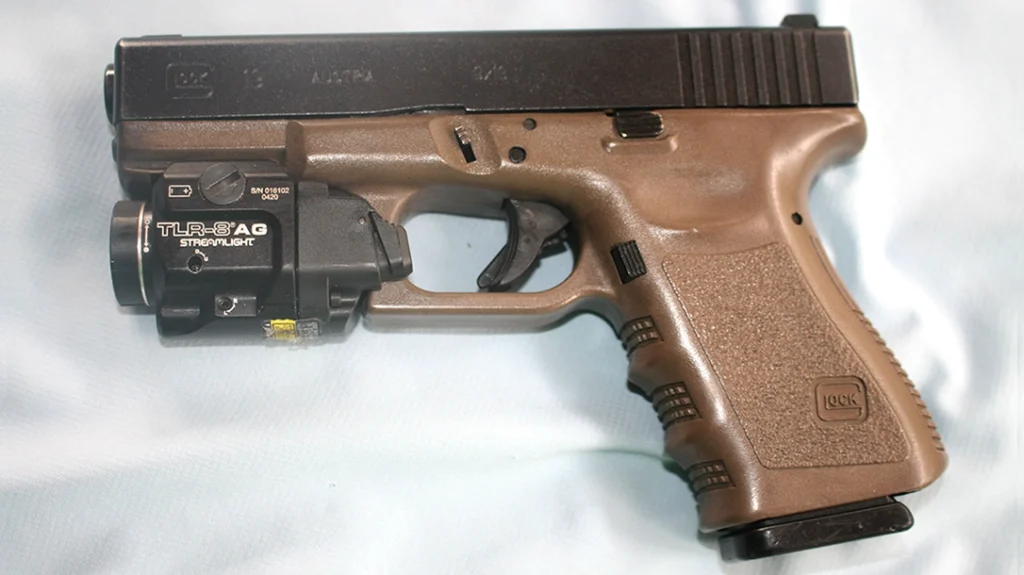
As indicated earlier, adding even a small light to your pistol may make concealing it a little more challenging and limit your options. But if you shop around, you will no doubt be successful. As for me, the advantages of the WML outweigh the small inconvenience of a slightly larger carry package.
But again, my lifestyle allows me to get away with it.
Final Thoughts
While a WML remains a great threat management tool, it’s a supplement and not a replacement for a handheld flashlight. But do you really need it?
The overwhelming percentage of incidents involving armed citizens unfolding at relatively close range makes use of a light a non-factor. For that matter, whether your pistol harbors a 15-round magazine or a red dot optic probably won’t matter either.
You, however, may be the anomaly. It’s far better to have the right tools and not need them than to need them and not have them.
For more information, please visit Nightstick.com, Streamlight.com, ViridianWeaponTech.com, and Surefire.com.
